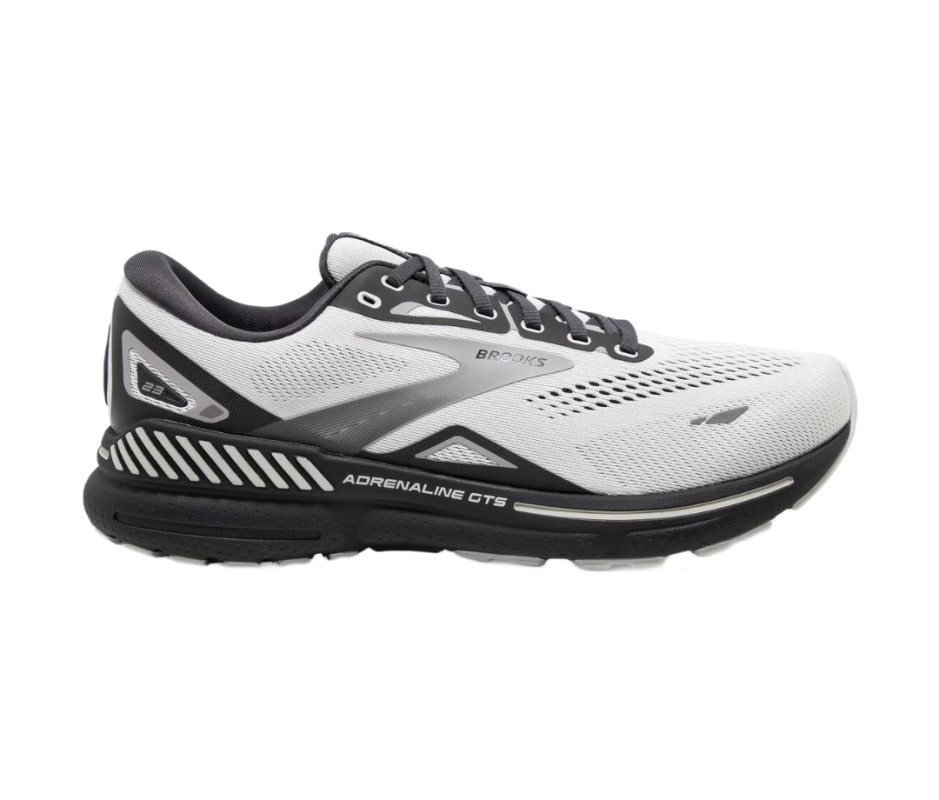The Best Running Shoes of 2024, Tested and Reviewed

For the average runner, choosing the best running shoes is a daunting task. There’s an overwhelming number of options on the market, and even for experienced athletes, it can be difficult to know which shoe models will best suit your running style, gait, and the terrain you run on.
To help you sort through the footwear deluge, the Men’s Journal staff and I put dozens of running shoes to the test and highlighted our favorites in this guide.
Men’s Journal aims to feature only the best products and services. We update when possible, but deals expire and prices can change. If you buy something via one of our links, we may earn a commission.
Best Men’s Running Shoes Overall: Saucony Endorphin Speed 3  Saucony Endorphin Speed 3
Saucony Endorphin Speed 3
Courtesy Image
Need one shoe that can do it all? Saucony Endorphin Speed 3 comes as close to achieving that goal as any shoe we tested this year. At just 8.1 ounces, it’s as light as many of the best racing shoes, and the Pwrrun PB midsole feels incredibly springy underfoot. This midsole is made with polyether block amide (PEBA) foam, a very soft, lightweight, and highly responsive compound used in many brands’ premium running shoes. The Pwrrun PB material gives the Speed 3 a noticeably peppy ride with excellent shock absorption, too.
The Speed 3 also features a rocker sole shape (where the sole curves upward at the toe and heel) and a nylon plate embedded within the midsole. The rocker shape promotes smooth, efficient transitions from landing to toe-off, and the stiff midsole plate flexes at landing and snaps back into shape for an extra boost of energy return. These features make the shoe well-suited to fast paces, but it also has plenty of cushioning for running long distances—it fared well for me on a 9-mile Sunday long run, for example. In my testing, I also appreciated the breathable upper, which kept my feet comfortable in summertime Arizona heat (I live in Phoenix).
The only drawbacks? The exposed midsole areas showed wear quickly (PEBA isn’t a super durable material), and the Speed 3 runs small. I had to go up a whole size to give my toes enough wiggle room.
Weight: 8.1 oz
Drop: 8mm
| Pros | Cons |
|---|---|
Lightweight | Runs small |
Springy and fast | Exposed midsole areas lack durability |
Suitable for racing and training | |
Well-cushioned and comfortable |
Best Men’s Trail Running Shoes: Nike Pegasus Trail 4 GTX 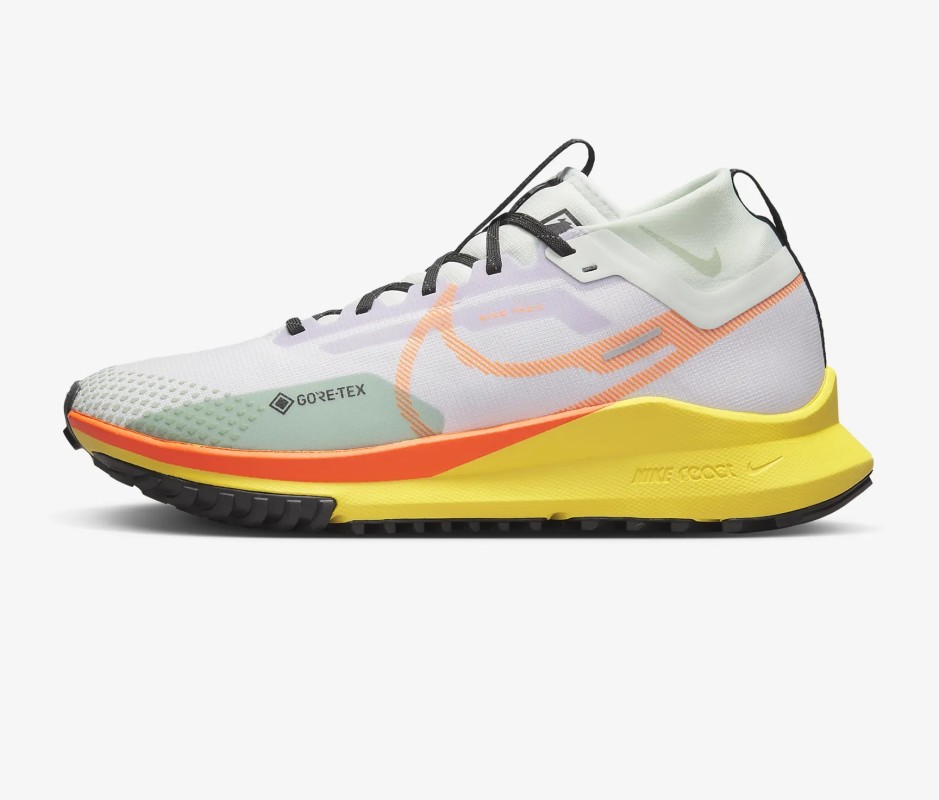 Nike Pegasus Trail 4 GTX
Nike Pegasus Trail 4 GTX
Courtesy Image
The Nike Pegasus Trail 4 GTX earned its status as our favorite trail shoe because it tackles a variety of terrains really well. Men’s Journal editor Michael Charboneau tested this shoe, and he loved the React midsole foam: It hit a perfect balance of shock absorption and bouncy responsiveness. In both wet and dry conditions, the shoe created confidence-inspiring grip on hard-packed trails, rock, and even pavement. The Gore-Tex liner kept his feet warm and dry through light rain, and the flexible upper created a close fit without slippage. If you run on primarily dry trails or in hot weather, however, these aren’t the best pick—the Gore-Tex upper reduces the shoe’s breathability. Check out our trail running shoes guide for even more options.
Weight: 10.2 oz
Drop: 9.5mm
| Pros | Cons |
|---|---|
Good traction on varied terrain | Upper lacks breathability |
Great for wet weather | |
Well-balanced cushioning |
Best Men’s Running Shoes for Flat Feet: Altra Paradigm 7 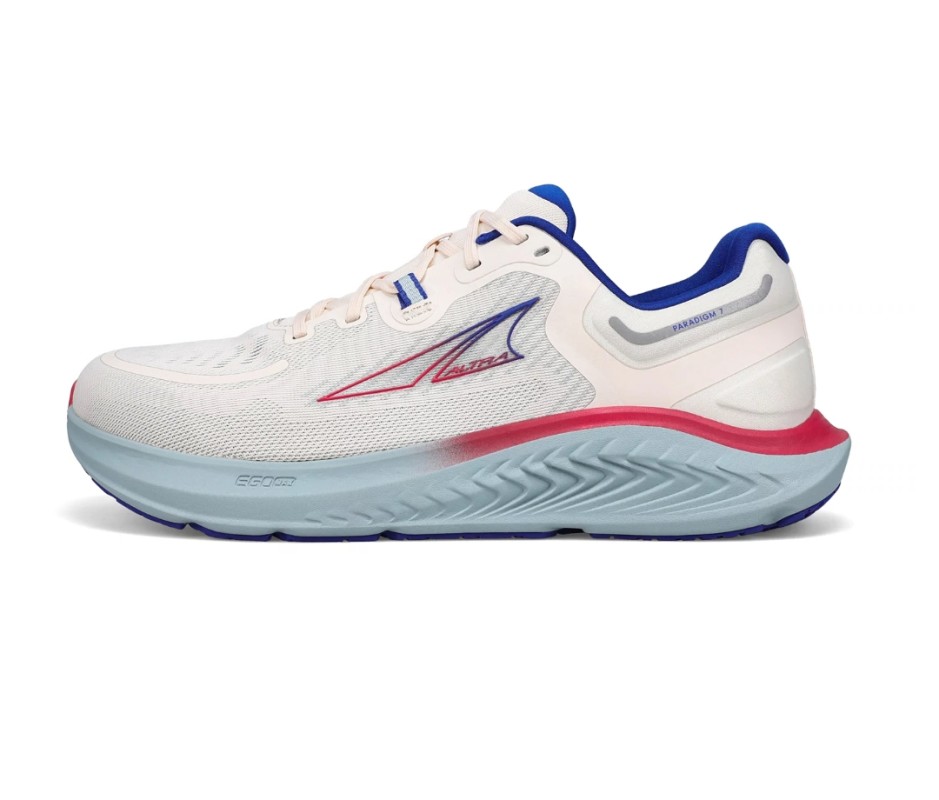 Altra Paradigm 7
Altra Paradigm 7
Courtesy Image
Altra Paradigm 7 is a well-cushioned shoe with a spacious footbed and built-in support, and it’s a strong choice for those with flat feet or collapsed arches. It utilizes Altra’s signature Balanced Cushioning design: The heel and forefoot are at the same height within the shoe, otherwise known as zero drop. When running, zero-drop shoes shift the load away from your knees to your ankles and calf muscles, so these designs can benefit flat-footed runners who suffer from knee pain. The flat footbed is a matter of preference—you’ll have to try these on to see if they work for you—but the Paradigm has other features that work well for flat feet, too.
Anyone familiar with Altras has probably noticed the shoes have a “weird looking toe box,” as one tester put it. The Paradigm looks a little squared off and boxy at the front, but testers found it fit much better than expected, with no looseness, and it gave their toes plenty of room to splay. In addition to a spacious toe box, the shoe has a generous midfoot area that won’t constrict flat feet, and it’s available in wide sizes for even more room. The Paradigm has a relatively thick layer of midsole cushioning for a comfortable ride, and it’s also built with Altra’s GuideRail, a layer of foam on the medial side of the shoe that supports the foot and keeps it properly aligned within the shoe.
If you haven’t tried zero-drop shoes before, stick to short runs at first and give your body time to adjust. And even if you don’t have flat feet, these shoes can be beneficial: I’ve noticed Altras can ease hot spots on my feet that develop after wearing higher-drop shoes.
Weight: 10.4 oz
Drop: 0mm
| Pros | Cons |
|---|---|
Excellent fit for flat feet (and wider feet) | Zero-drop design can feel uncomfortable to some |
Stable, well-cushioned ride |
Best Men’s Running Shoes for Wide Feet: Brooks Adrenaline GTS 23
The Adrenaline is a standout model for wide-footed runners in search of a proper fit. To test this shoe, I worked with my uncle and cousin, both of whom have boxy, wide feet. My cousin recently converted to the Brooks Adrenaline GTS 22. My uncle tried the updated 23.
Courtesy Image
Often, folks with wide feet must settle for one of two extremes: either wearing shoes that are too narrow and constrict their feet, or wearing shoes that are the correct width but don’t keep their feet secure within the shoe. The Adrenaline solves both issues. The shoe is available in wide (2E) and extra-wide (4E) sizes, so you can get plenty of space no matter the shape of your foot. It’s also equipped with Brooks’ GuideRails, which are firmer layers of foam placed around the heel and the medial side of the footbed. The GuideRails cradle your feet, countering overpronation and keeping them aligned in the shoe—even if you opt for the extra-wide sizes. Testers loved the shoe’s wide toe box and very stable feel; they also appreciated its flexibility and secure fit. My uncle was shocked to discover he could fit into the Adrenaline without using specialized lacing techniques—something he often has to do with other shoes. The Adrenaline has the same soft cushioning as the Ghost below, and it’s a great everyday trainer for wide-footed runners.
Weight: 10.1 oz
Drop: 12mm
| Pros | Cons |
|---|---|
Available in wide and extra-wide sizes | High drop may be uncomfortable for some runners |
Very stable ride |
Best Men’s Stability Running Shoes: Hoka Gaviota 4 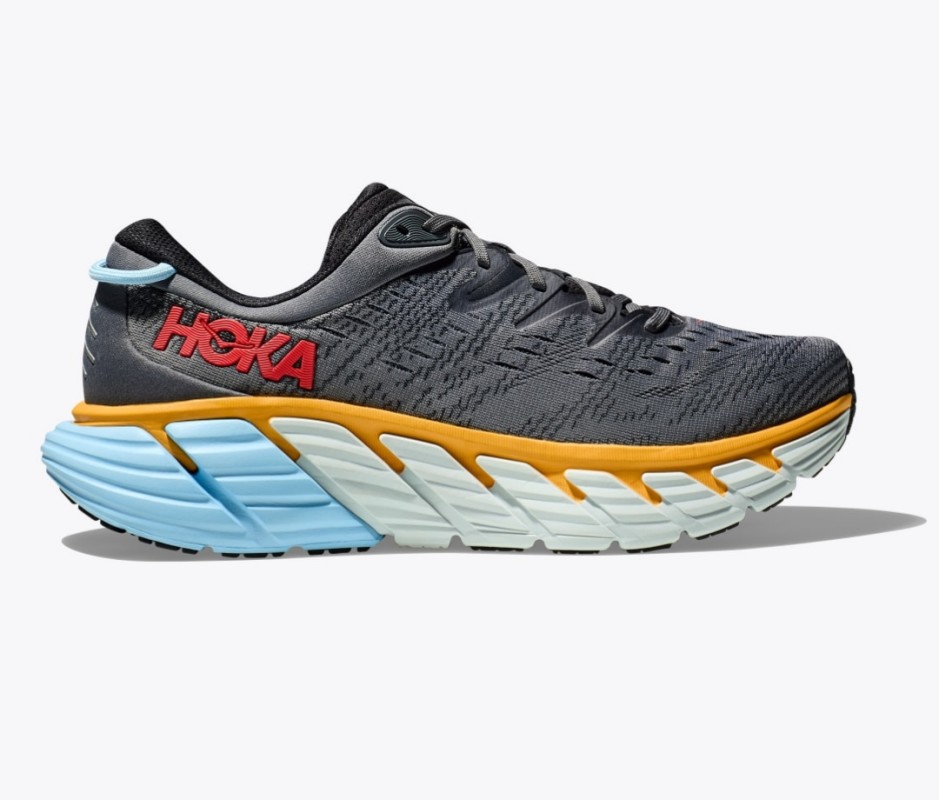 Hoka Gaviota 4
Hoka Gaviota 4
Courtesy Image
While I can definitely get away with neutral shoes, a stability shoe designed to correct overpronation helps my stride, especially during everyday runs and longer efforts. While Hoka pushes the Arahi as its primary stability shoe, I found the Gaviota 4 to be my favorite stability-focused option from any brand.
The Gaviota 4 has a midsole setup similar to the Bondi, Hoka’s popular max-cushion model. This means the Gaviota has lots of plush cushioning (and a correspondingly high weight). Unlike the Bondi, the Gaviota includes Hoka’s J-Frame—essentially, a layer of firmer foam within the midsole that cradles the heel and supports the medial side of the foot. In my testing, I liked the Gaviota’s wide sole geometry, which created a planted feel despite the shoe’s tall stack, and the J-Frame effectively prevented my feet from rolling too far inward. In addition, the rocker sole shape made transitions smooth and easy. While it’s definitely a heavy shoe, the Gaviota excels at longer, slower recovery runs, and it’s a strong choice for overpronators.
Weight: 11.4 oz
Drop: 5mm
| Pros | Cons |
|---|---|
Very stable ride | Heavy |
Comfortable feel |
More Great Running Shoes We Love
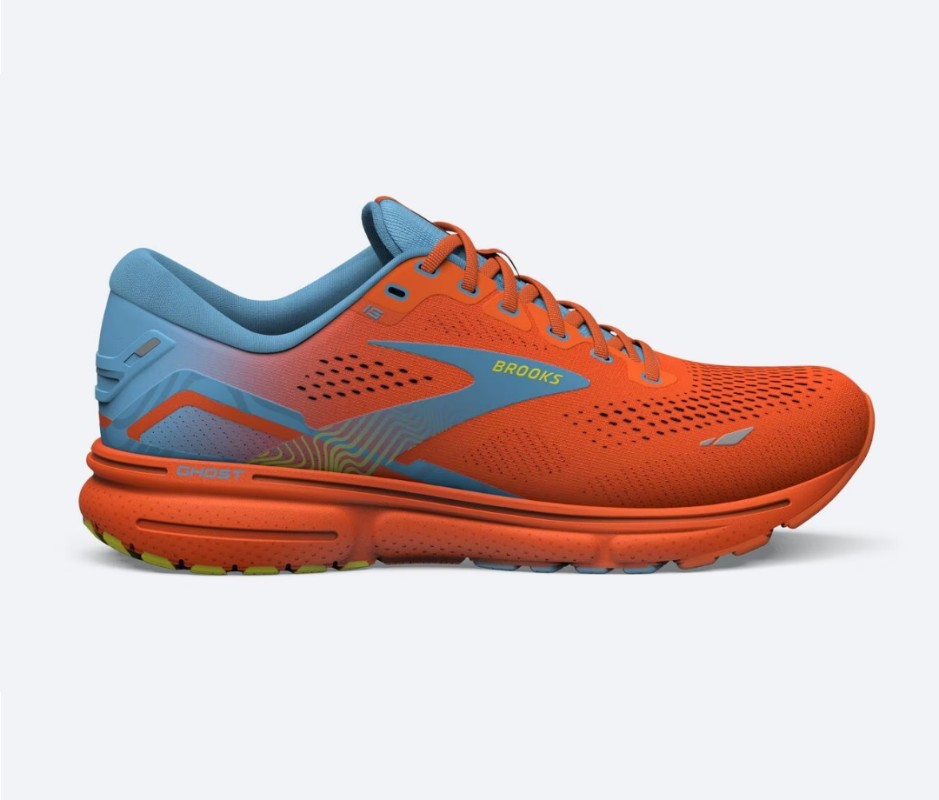
Courtesy Image
Every runner needs a reliable workhorse training shoe. I love Brooks Ghost 15 for my casual runs when mile splits aren’t important and enjoying time outside is the main goal. The Ghost has long been popular (hence its 15 iterations) for its comfortable ride and great fit. The midsole foam is soft and provides good shock absorption, and the upper is both breathable and flexible while providing a reliably snug fit. That’s true even if you have wide or narrow feet, as these shoes are available in four different widths (1B through 4E).
Because the Ghost prioritizes comfort and fit over speed, the shoe is a bit heavier and less springy than other picks. Additionally, the high heel-toe drop (12mm) may not work for runners who prefer a lower-drop footbed. But if you need a durable everyday shoe that serves up a comfy, cushioned ride, the Ghost is a great choice.
Weight: 10.1 oz
Drop: 12mm
| Pros | Cons |
|---|---|
Soft, well-cushioned ride | Somewhat heavy |
Available in a variety of widths | Not very responsive |
